"A family picture built around the young daughter of Ira Radovsky. She is coming into the age when little girls want to go for a walk when things at home are not completely as they would like them. We follow the adventures of this young lady and enjoy every moment of it." PSA Journal, Nov. 1958, 46.
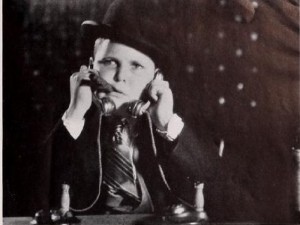
"In Little Geezer, running 400 feet, Theodore Huff, ACL, has produced one of the most able and amusing burlesque film stories of the amateur year, repeating his success of that earlier satiric classic, Hearts of the West. Again he has used, with amazing directorial facility, the neighborhood youngsters as his only actors. Again he has aped, with his own peculiar genius, the threadbare cliches of professional drama, poking fun in his filming as well as his titling. Little Geezer offers fine examples of real cinema, is the sort of thing amateurs can do as well or better than professionals and is delightfully amusing in the process." Movie Makers, Dec. 1932, 561.
"Theodore Huff, ACL, has done it again! That lone wolf producer of Hearts Of The West has paralleled the gorgeous fun of his earlier panning of the purple plains as he takes the gangsters for a ride in Little Geezer. The Big Shot, his lieutenant, Greta Garbage (" — more to be pitied than sniffed at") and Scarface Macaroni are all there, played by the neighborhood kids, no one of them over eleven years old. Through their naively serious acting and his own genius at direction and editing. Mr. Huff has riddled with bursts of laughter the machine gun monarchy of professional filmdom." Movie Makers, Sept. 1932, 398.
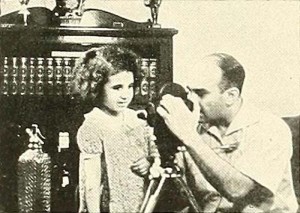
"Already well in the forefront of contemporary photoplay producers, Charles J. Carbonaro has taken a marked step onward in his current comedy, Little Sherlock. Simply planned yet smoothly integrated, this new production tells a delightful tale of the precocious daughter of a photographer, who was always "helping" father. How, during a surprise robbery of their home, she records the crux of the event with Daddy's amateur movie camera provides a denouement which is both satisfying and successful. In Little Sherlock, Mr. Carbonaro has more than maintained the suave lighting and impeccable technical standards for which his work is known; he now wins new honors with a display of genuine talent for light comedy direction. To both of these credits must be added praise for his own acting of the busy cameraman and for the portrayal of the eager apprentice by his own daughter, Alice." Movie Makers, Dec. 1937, 603.
"Local events in Preston - the Mayor's procession; Christmas shopping; pot fair; Royal Infirmary rag; egg rolling in Avenham Park; dog show; and a horse fair" (NWFA Online Database).
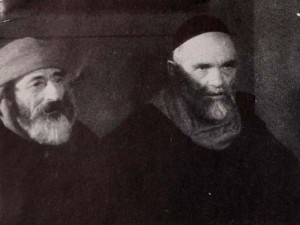
"Lot, two reels 35mm., produced by Dr. James S. Watson, jr., ACL, and Melville Webber, may be said to be as much of an advance in motion picture technique over Fall of the House of Usher, their earlier production, as that film was an advance over standard professional cinematography. There are very few cinematographers in the world who have devoted the whole of their efforts to experimentation with the motion picture as an art medium and, in the opinion of Movie Makers' staff, there is none who has achieved the signal results of these two. Lot represents a complete innovation, not only in the treatment of the theme as a whole, but in the cinematic interpretation of the sequences. In it, the familiar tools of the advanced cinematographer, multiple exposure, trick printing, complicated lighting, symbolism, models and models in combination with life size sets are used to secure an entirely new and very beautiful cinematic representation of the Biblical story. In Lot these two amateurs have mastered the world of illusion of the motion picture but, in doing so, they have produced more than a mere novelty; they have founded a new cinematic art." Movie Makers, Dec. 1932, 538.
An avant-garde retelling of the biblical story of Lot and the destruction of Sodom (from the Book of Genesis, chapters 17-19), this film was controversial for its nudity and homoerotic overtones. (D.J. Duffy)
"In Love Apples, Henry Hoke presented what is, so far as Movie Makers records show, the first approach to filming the hobby and preoccupation of an entire family. Unquestionably the Hoke family likes tomatoes and, something less commonly encountered, it is willing to work to produce them. Mr. Hoke's Kodachrome film lets us see the entire family group at work planting, weeding, watering and picking — especially picking, because Mr. Hoke makes quite a cinematic point of eager hands reaching for tomatoes in and out of season. The continuity is active and full of humorous touches, with a shade too great an emphasis on camera tricks for their own sake; the photography is adequate and often provides much screen beauty. Above all, this film has a unity which, added to its unusual motive, brings it into the Honorable Mention class." Movie Makers, Dec. 1936, 549-550.
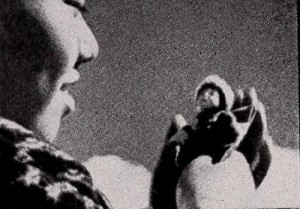
"Possibly the most outstanding features of Okamoto's work were his photography and composition. Many regarded his photography as the finest that had ever been put on motion picture film." American Cinematographer, Dec. 1932, 7.
"Second prize was awarded to Tatsuichi Okamoto of Matsuyama, Japan. Title of his single reeler is 'Lullaby,' which depicts the emotions of a mother singing to her child." Variety, Dec. 13, 1932, 2.
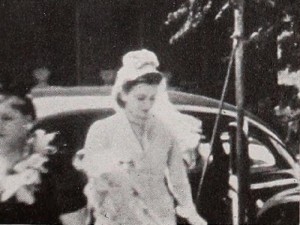
"Although Made in Heaven, by Jesse Geisler, is a carefully planned and sequenced film of the preparations for a wedding and the wedding itself, it gives the effect of complete realism, tinctured with good humor and the joy of life. The preparations are gay, as the bride's friends help her to dress, producing "something old, something new, something borrowed and something blue" in the traditional way. The Jewish orthodox ceremony is handled with simple dignity and then, with the section presenting the wedding party, the film resumes its lighter treatment. Transitions from one sequence to another are excellently handled, and the scenes of the wedding party represent an outstanding accomplishment, for it is not easy to make good movies at such an occasion." Movie Makers, Dec. 1943, 478.
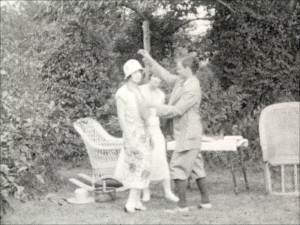
"Mag the Hag" is a 1925 amateur fiction film shot and edited by Hiram Percy Maxim (1869-1936), founder of the Amateur Cinema League. It is one of the earliest amateur fiction films shot on 16mm in Northeast Historic Film's collections. It features Maxim's daughter, Percy Maxim Lee, in the lead role of Percy Proudfoot. oldfilm.org
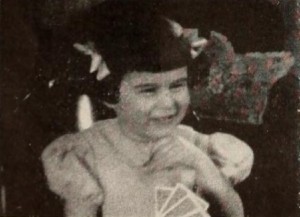
"Two children and a simple plot are ideal ingredients for a family film story. In Magic Stairway, Margaret and Harlan M. Webber have used this combination to develop a lively and natural movie of their son Roy and their daughter Janet. Roy longs for a punching bag for Christmas, but he feels that it is a too expensive gift to expect from his parents. He decides to earn the money for it with the help of his young sister. In beautifully filmed sequences, the children are shown melting castoff candles and remolding them into delicate shapes, to be sold to the neighbors. The profits mount slowly until the desired goal is reached. Then tragedy strikes when Janet accidentally breaks one of Mother's treasured teacups. The direction and cutting in this sequence are particularly skillful, as each person's reaction to the broken cup is registered. All is harmony on Christmas morning when Mother's gift from the children (bought with the punching bag money) is revealed as a replacement of the broken treasure. Needless to say, the children fare handsomely, with the punching bag starring as the climactic present. Faultless camera work and intelligent direction of the children contribute to make this film far above the average." Movie Makers, Dec. 1947, 514.
Total Pages: 29